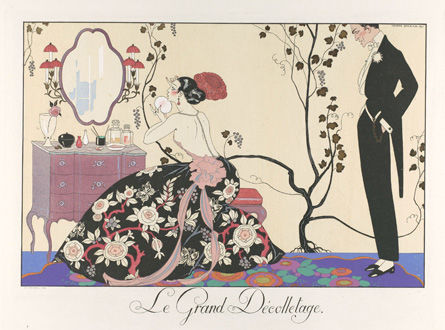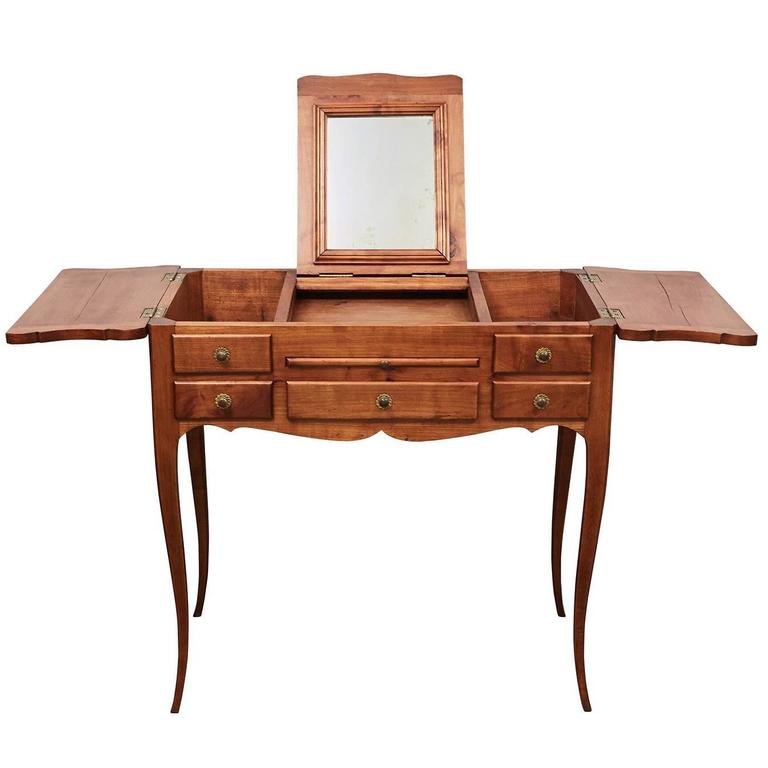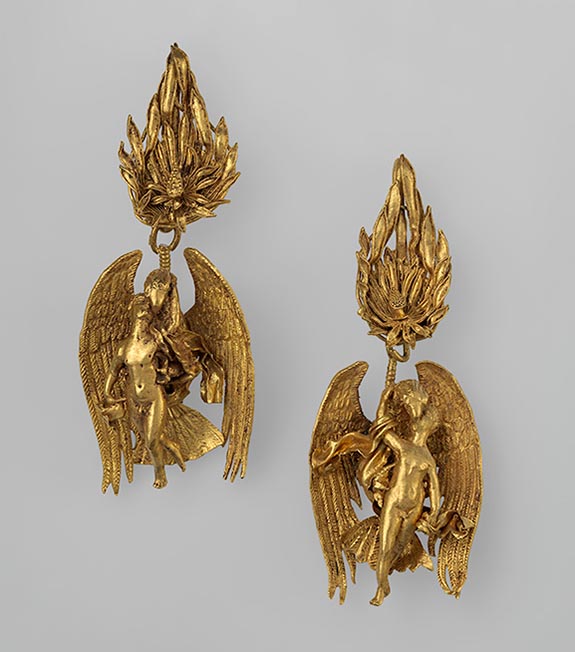talkingfashion » fashion prints and patterns
-
The Grand History of Gloves
The Grand History of Gloves
By Paige McKirahan
In the accessory world, there are many pieces that have lifespans spanning centuries back to primitive ages. Can you guess which one we will be discussing today? As we head towards colder months, one of the most widely worn pieces conceived in ancient times is seeing an influx in use. Hats or coats may be the first things that come to mind, but it is actually the history of the glove that we are looking to dive into!
As a major piece in the fashion accessory puzzle, we first heard of the the glove when it was incriminated in the History of Herodotus (440 B.C.E.) and discussed as protective wear in The Odyssey by Homer. Ancient Egyptians typically used gloves as protective garments while working, but Pharaohs sported them to symbolize their high status. Women in this time wore the piece to protect the beauty of their hands, and they were made as a sort of small “pocket” with no holes for fingers; essentially, they were similar to today’s mittens and allowed women to maintain a feminine look.

Gloves found in King Tut's Tomb
(photo credits to pinterest.com)
Moving away from this more general use, gloves began being integrated into religious rituals. Bishops began a tradition of wearing them for Holy Sacrament, and their presence in religion can be traced all the way back to the 10th century. Popes, cardinals, and bishops wore them to keep their hands clean for holy ceremonies, prompting Kings to adopt the same practice when conducting royal business. Royalty also took cues from ancient Egyptians and later used gloves as an ornamental accessory to exude wealth and luxury. As we move towards the 13th century, they made their way in to royal women's fashions and common fabrics included silk or linen, featuring lengths reaching the elbow. By the 16th century, Queen Elizabeth brought bejeweled gloves to the forefront as a sought after trend, taking the normally simple accessory to previously uncharted territories.

Glove from the Holy Roman Empire
(photo credits to inesgloves.com)
In the 1700s, short sleeves came into circulation, prompting gloves that reached halfway up the forearm to become popularized. This style was on trend well into the next century, when gloves were more popular than ever before. Buttoned silk, kid (soft leather), or velvet gloves paired with evening dresses were customary, and longer suede gloves could be seen during the day during tea. At this point, the accessory was still being made mostly by hand, as most manufacturers opted out of using the complicated sewing and pressing machines available at that time. At the conclusion of the 1800s, we saw innovations in the industry that caused the first sterilized medical gloves to be created in 1894; the first disposable latex gloves were later manufactured in 1964 by Ansell.
The 1900s saw the use of gloves transform entirely. At the beginning of this century, one of the first references towards criminals using gloves to hide fingerprints was made in 1905 and this mysterious affiliation has been highly present in the media ever since (think O.J. Simpson). The industry began seeing dramatic changes on account of the societal shifts in the first half of the century; the birth of old Hollywood and the popularity of starlet’s style in the ‘20s through the ‘50s made simple gloves a staple in any modern woman’s closet. Gloves were still seen as a symbol of elegance well into the 1960s, where they truly came into being a symbol of riches, hypocrisy, and official relations. After that decade, the popularity of gloves for purposes other than cold weather wear declined; the introduction and overall popularity of more simple clothes and jeans didn’t require the upscale accessory. We saw a brief popularity boost in the ‘80s, with fingerless, netted, leather, and neon gloves returning to storefronts as the grunge and hairband movements favored accessory laden outfits.


Marilyn Monroe and Audrey Hepburn
(photo credits to pinterest.com)
Today, gloves have continued moving away from their royal roots and have headed towards adopting a more casual position in the fashion world. In addition to their wintertime popularity, they have also become important parts of sport uniforms used in baseball, golf, football, racing, and a multitude of others. In fashion, there are three prominent lengths: wrist (matinee), elbow, and full length (opera). The most popular material is satin and stretch satin, and are commonly seen at formal events such as proms, weddings, quinceanera, cotillions, or confirmations. If you have any of these events coming up or you are just trying to prepare for the December snow, we here at TalkingFashion have you covered! Head over to our collection to get a set of gloves wonderful enough to make you feel like royalty!
-
Dazzling Dressing Tables: A Brief History of the Vanity
Dazzling Dressing Tables: A Brief History of the Vanity
By Paige McKirahan
Though the world of luxury furniture is very much alive and well, the type of pieces we see popularized now are worlds away from the specially crafted styles that previously dominated the market. If you are someone with cosmetics, accessories, or perfumes, it is likely that you have some sort of container to hold them all (or so we hope!). But, we ask, have you ever stored them in an ever-so-glamorous vanity?
The dressing table is one piece of furniture that reveals a great deal about the culture in its time; few other items tell us more about leisure pursuits, trends, and changing social customs than this. This is an ever evolving piece and it has held a variety of names including the dressing table, dressing stand, vanity, and toilet table. But, we wonder, where did this fashionable furniture come from and how did it achieve the elegant status is possesses today?

(photo credits to the metmuseum.com)
Of course, the vanity comes from humble beginnings in ancient culture; its earliest ancestor is considered to be ornate boxes that were crafted for holding beauty products in Egypt and Greece. The use of boxes for this storage purpose continued for centuries until the 1600s in Europe, where the early vanity began evolving. The original name of the piece was the toilet table and they were used in the bathroom for hygiene purposes with a wash basin for freshening up. High society in this century and into the next began wanting more delicate designs; they started commissioning specialized furniture pieces that were modeled after shaving tables, poudreuses, and the low boy. Poudreuses hailed from France; they boasted a small tabletop for holding perfume, along with a small amount of drawer storage for makeup. Low boys were more so popular in the U.S. and England and were often custom made. In addition to their decorative elements, they typically offered one or two rows of drawers for storage purposes.


Poudreuse (top) and Low boy vanity styles
(photo credits to pinterest.com)
As we headed towards the 19th century, these tables started to become larger with more decorative features. They now included mirrors and an increased number of drawers, making them a more cabinet-style. With their newfound function, they began being included in bedroom furniture collections and were commonly accompanied by a small stool. The variety of styles offered also increased in this century; colonial, Queen Anne, and Chippendale style vanities were elaborate and were often made of oak, walnuts, or mahogany. We saw huge art movement influence on these tables and many revivalist styles including Gothic, Elizabethan, Rococo, and Renaissance.
19th Century Rococo Vanity
(photo credits to inessa.com)
The early 20th century brought the Art Deco movement alive; this artistic style is synonymous with the 1900s rise of the vanity as luxurious dressing tables became the epitome of prestige. Old Hollywood films of the ‘20s and ‘30s painted a picture of a femme fatale sitting in her Manhattan apartment decorated with an elegant vanity table. Since then, vanity table's luxurious standing still prevails with influencers and couture queens alike creating entire rooms surrounding their vanity space. Do you have a vanity you are looking to fill! Well say goodbye to those empty drawers and hello to our collection for a solution any accessory lover would adore!
-
Fashion’s Favorite Gifts
Fashion’s Favorite Gifts
By Paige McKirahan
Hello TalkingFashion lovers! It is finally December; since its the season of giving, we feel that there is nothing better to give or receive than the gift of fashion! If you’re one of the elves who has made a dent in their holiday purchases with our cyber sale last week, you’ve got the right idea! But if you’re like me and haven’t even came close to formulating gift ideas for your loved ones, not to fear; the perfect holiday gift inspiration is here! We have decided looked at some of our favorite fashion fanatic’s holiday gift lists and found some great ideas for the most flamboyant to the most minimalist on your list. Read on to see our top five gift ideas from the industry's finest and how you can find similar items in our store to get that quick holiday fix!
Marina Larroude, fashion director at Barneys New York, says she looking for shine this festive season.
She would love to add more sparkles to her wardrobe for the holidays; she specifically mentioned a sparkling Sonia Rykiel bag, but you can find some shimmering pieces right in our collection!
Dion Lee, women’s ready-to-wear designer, is all about giving jewelry to her loved ones.
The talented creative claims that the only purchase she's made so far this winter is a custom jewelry piece. She finds jewelry to be one of the best gifts because of its “intimate and timeless” feel. We agree, Dion!
Rickie De Sole, fashion director at W, is hoping for a new timekeeping piece this Christmas.
He claims that classic watches that go with everything are essential to ones outfit; this is proven by the fact that he's worn the same watch since college! He loves the Chanel Boyfriend style, and it has been the only piece that have prompted him to consider breaking his longstanding devotion to his current watch! Check out a similar style below!
Michelle Cordeiro Grant, founder and CEO of Lively, is all about vintage pieces with a story.
Number one on this boss woman’s list is vintage scarves or other vintage accessories from secondhand stores! She loves when her gifts have a story and a well known history as it adds new depth to any classic piece.
Tanya Taylor, Toronto-born designer, is in the market for beach-inspired fashions!
This colorful designer loves all things tropical; this ocean affintity stems from her son's name, which is palmer! Palm themed accessories and earrings are a sure to be a success under the tree this year!
To shop any of the items you see above, click on the image to buy with ease! For other gift options, head over to our collections and start checking off those items on your list!
-
Designer Spotlight: Sugar Gay Isber
Designer Spotlight: Sugar Gay Isber
By Paige McKirahan
This week, we have decided to spotlight a designer that is not only prominent in our collections, but prominent in jewelry lover's collections over the globe. Gay Isber, affectionately nicknamed Sugar, is a Canadian jewelry designer based out of Austin, Texas. As a seventh generation Texan, she planted her roots in the south with Gay Isber Designs, her namesake jewelry and product design company. As the creative force propelling the business forward, she has been crafting jewelry for over 15 years; she has been featured in national and international media, and has created pieces for everyone from royals to rock stars. She has even been dubbed “a guru of the fashion and jewelry industry” in her home state, which eventually pushed her to receive the Designer of the Year award in 2016. Now that we know of her great successes, let’s learn more about her inspiration, background, and her beautiful creations!

(photo credits to shoplc.com)
Sugar is a self-proclaimed jewelry lover who advocates for conversational pieces that are enjoyed more with every wear. As a creator, she is uninterested in what other designers are producing and focuses more about how her materials inspire her or how she can continue advancing her skills; she feels that she is truly only as good as her last piece.
Gay began her amazing journey by starting off as a painter after graduating with a Master’s Degree in Humanities and Visual Arts. She wanted her paintings to be show stopping, and concluded she would stop art show traffic by creating a bracelet that emulated her artwork’s colorful aesthetic. By the show’s conclusion, she realized that most of the patrons were more interested in her bracelet than her paintings, prompting her to make the transition from art to jewelry. Despite this, she has continued painting as a hobby and many of her jewels look similar to her art.
As a full-time creator, Sugar says that she dreams about jewels and has worked with so many amazing people that make the effort worthwhile. Aside from designing pieces for Michelle Obama, Camilla and Prince Charles, Lady Gaga and Martha Stewart (to name a few), she has also created a line for Harley Davidson and have participated in fundraising events for the company benefiting breast cancer. She participates in a vast amount of charity fundraisers and sells her jewelry at those events, through The Shopping Channel, through her mailing list, and independent retailers. In addition to her career as a designer, she also has been teaching at Austin Community College since 2012 where she offers private or group classes.
Whether it be a custom piece or a simple design, Sugar’s jewelry is eye-catching and commonly features bright colors, beautiful gems, bead work or metallic accents. Looking for some Sugar of your own? We have enough to fill a candy store! Head over to our collection to find some great Gay Isber pieces that are sure to sweeten up this holiday season!
(All biographical information taken from gayisber.com)
-
The Met Museum Presents Jewelry: The Body Transformed
The Met Museum Presents Jewelry: The Body Transformed
By Paige McKirahan
In the wake of The Metropolitan Museum of Art’s most successful fashion related exhibit since its conception (talking about you, Heavenly Bodies Exhibit!), we here at TalkingFashion we have been excited to see what was next for the art-filled attraction based in New York City. Lucky for us, the topic for their new display covers none other than jewelry throughout time; museum patrons will be able to view over 200 pieces from dated 2600 B.C. to the present. The exhibit, which is titled “Jewelry: The Body Transformed”, opened on November 12th and will have a 15-week run in the iconic museum.

If you are lucky to see the exhibition, you will be faced with an exploration of how “jewelry acts upon and activates the body it adorns” from a historical perspective. The pieces are chiefly taken from the Met collection and many portions of the exhibit pair the jewelry with sculptures, prints, and photographs in order to enhance their story. Jewelry from around the world will be organized into galleries by the part of the body they embellish starting from the top of one’s head and hair; to the nose, lips and ears; neck and chest; and lastly waist, ankles, and feet.

After the exhibition is separated by body part, the remaining galleries are arranged thematically. The Divine Body is focused on early conceptions of jewelry and its previous link to immortality. The Regal Body will look at the use of jewelry as a status symbol. The Transcendent Body moves away from a rank-based evaluation and looks to jewelry’s historical link to the spirit world, where it was said to conjure spirits, appease gods and conjure ancestors. The Alluring Body gallery will celebrate how jewelry evokes romance and desire and the final portion, The Resplendent Body, will focus of elegant pieces designed for luxury settings. To see other magnificent pieces currently on display, head over the The Met's exhibition page. If you are looking to do more than just appreciate historical jewelry, head over to our collection and purchase a piece beautiful enough to be in a museum!
(all image credits to metmuseum.org)











